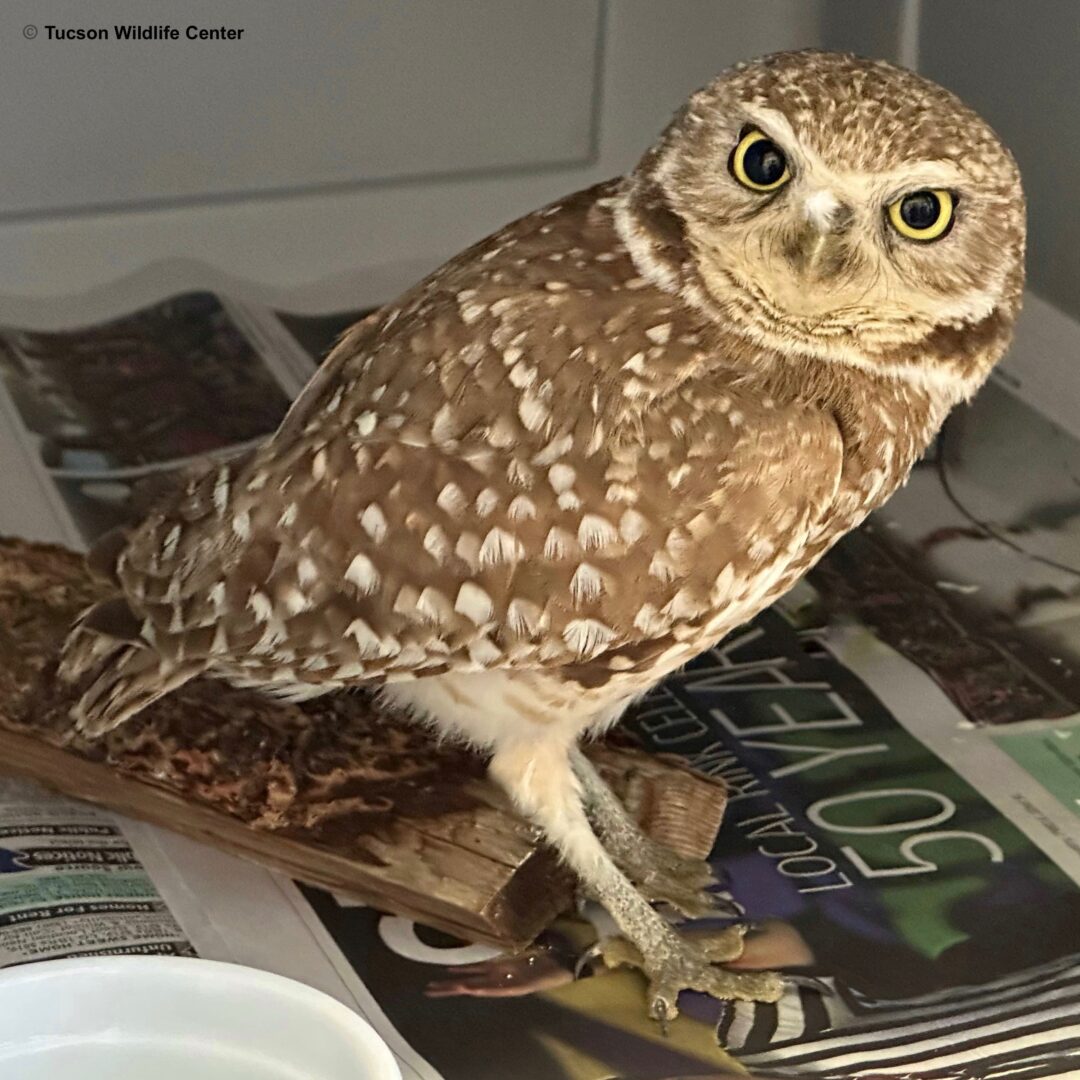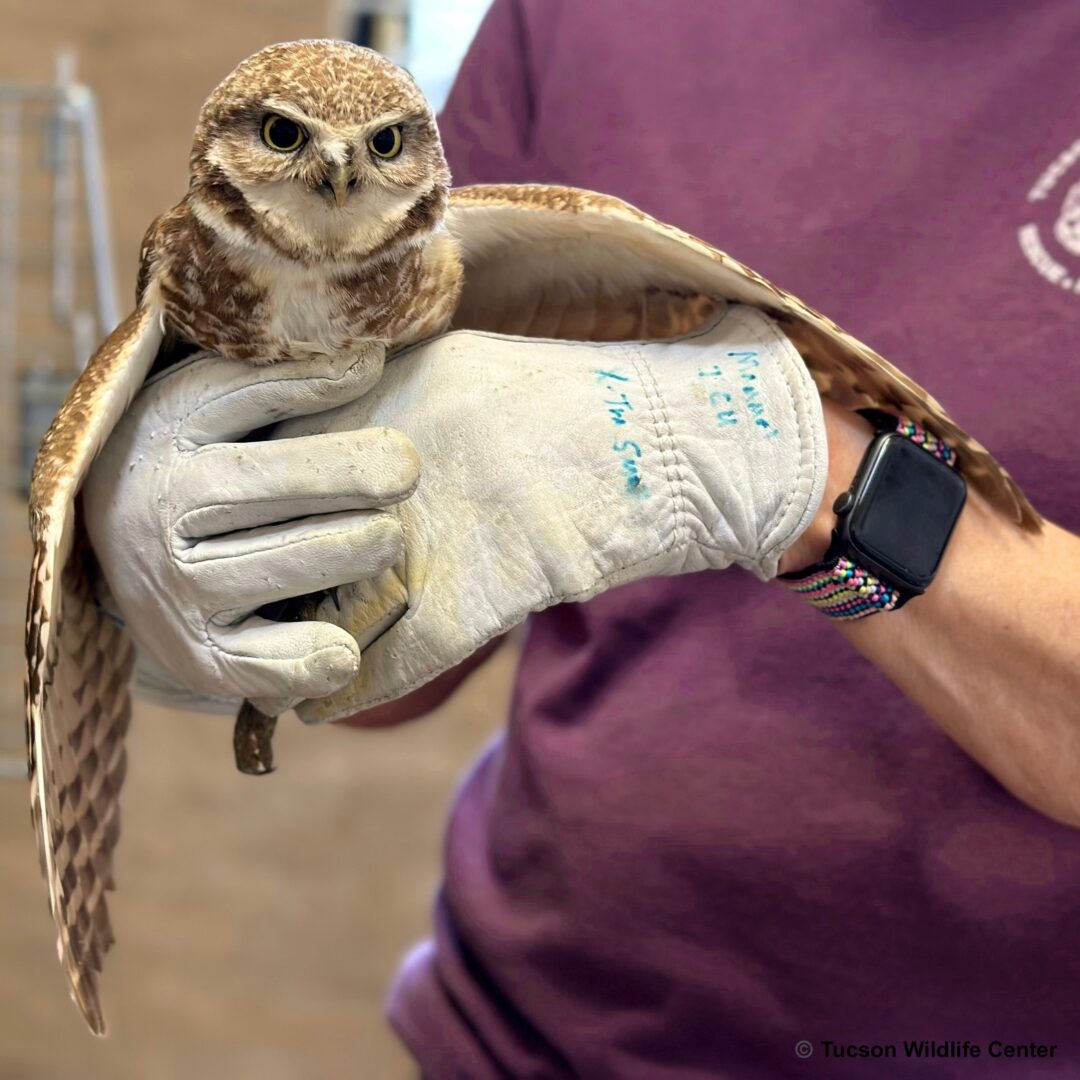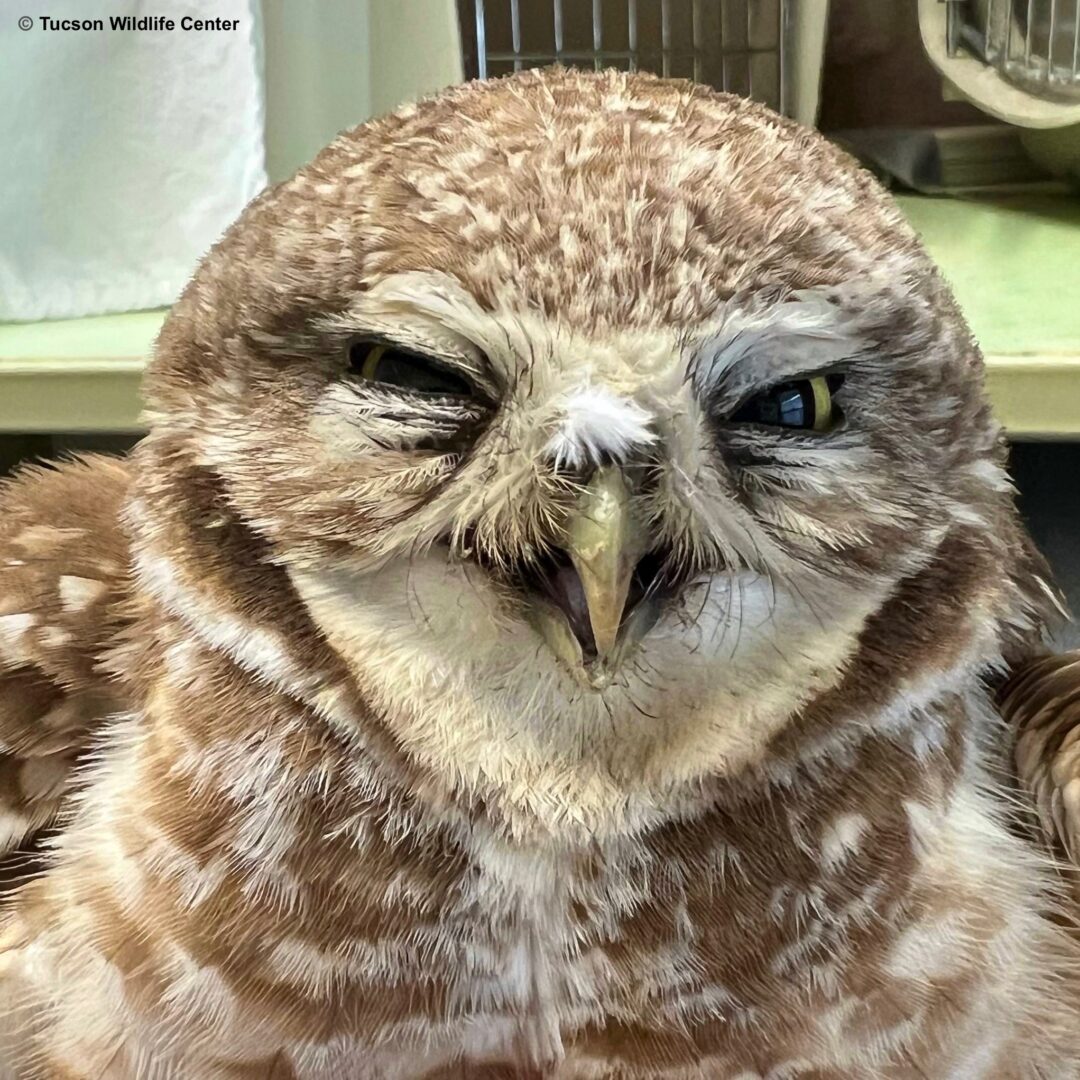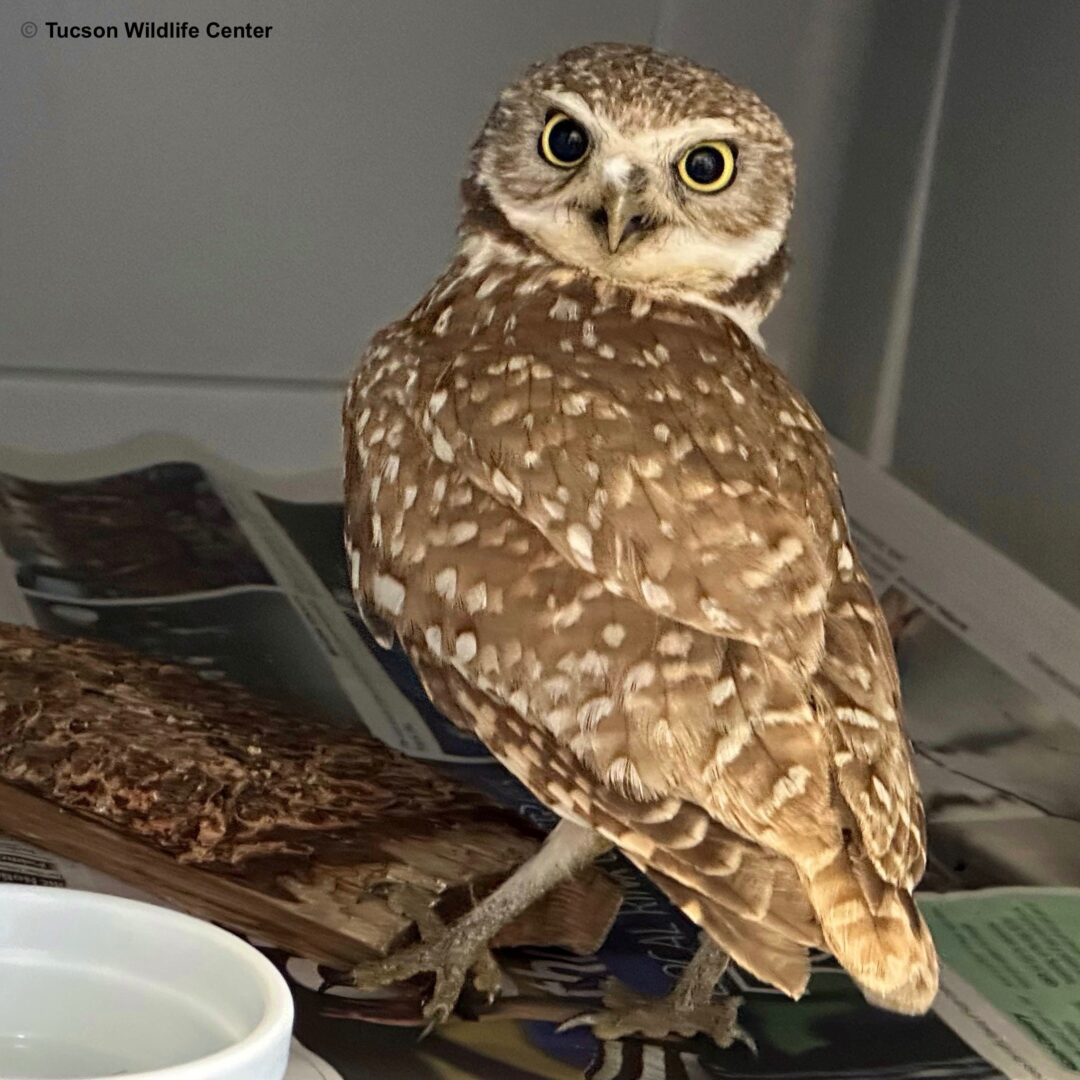
Western Burrowing Owl
This charismatic Western Burrowing Owl was brought to Tucson Wildlife Center after being found alone and unable to stand in a residential neighborhood. Upon arrival, he was exhibiting symptoms of possible pesticide poisoning, but his intake exam by TWC’s wildlife care team revealed head trauma, with possible vision impairment.
Unlike other owls, the burrowing owl doesn’t live in trees or only hunt at night. It makes its nest underground—usually in abandoned rodent burrows—and is active both day and night. According to the National Audubon Society, “cowboys sometimes called these owls ‘howdy birds,’ because they seemed to nod in greeting from the entrances to their burrows in prairie-dog towns.” * While they are still considered numerous in the United States, burrowing owl populations in some areas of Arizona are on the decline, as more open desert and farmland are developed. Pesticides, collisions with vehicles, and the elimination of burrowing mammals through pest control programs all impact burrowing owl colonies.
He is making steady progress and we are hopeful for a full recovery and release back into the wild, but head traumas take time. Unfortunately, returning him to the busy urban area where he was found will not be possible, as it would be unsafe. If he fully recovers, the Arizona Game and Fish Department will give him a ride to a small colony of burrowing owls in a protected and resource-rich habitat south of Tucson.
* https://www.audubon.org/field-guide/bird/burrowing-owl
If you would like to help patients like this Western Burrowing Owl, click the donate button below. We appreciate it, as will all the wild animals in our care!
We would like to thank Amazon Smile for all they did to help nonprofit organizations. Another way you can still contribute is to visit our “wish list” on Amazon by using the following link :





